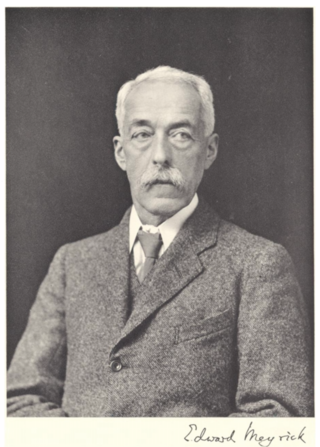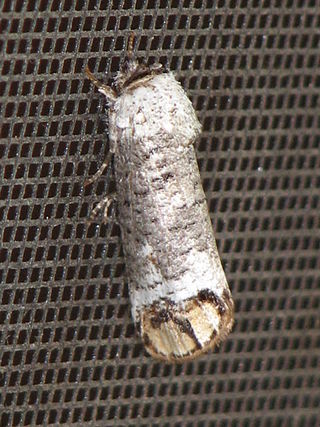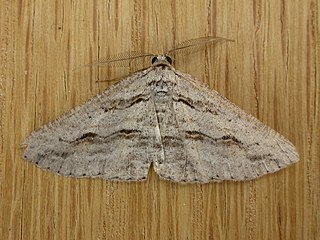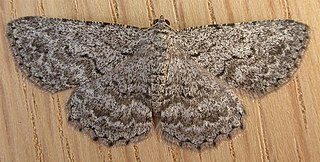
Edward Meyrick was an English schoolmaster and amateur entomologist. He was an expert on microlepidoptera and some consider him one of the founders of modern microlepidoptera systematics.

The Cossidae, the cossid millers or carpenter millers, make up a family of mostly large miller moths. This family contains over 110 genera with almost 700 known species, and many more species await description. Carpenter millers are Lepidoptera found worldwide, They are nocturnal, except for the Southeast Asian subfamily Ratardinae.

Spilomelinae is a very species-rich subfamily of the lepidopteran family Crambidae, the crambid snout moths. With 4,135 described species in 344 genera worldwide, it is the most speciose group among pyraloids.

Paranthrene tabaniformis, the dusky clearwing, is a moth of the family Sesiidae. It is found in the Palearctic and Nearctic realms.

Coleophora serratella is a moth of the family Coleophoridae. It is found in Europe, Japan (Hokkaido) and North America.

Syneora euboliaria is a moth of the family Geometridae first described by Francis Walker in 1860. It is found in Australia.

Syneora mundifera, the forest bark moth, is a moth of the family Geometridae first described by Francis Walker in 1860. It is found in Australia.

Gastrinodes is a genus of moths in the family Geometridae erected by William Warren in 1898. Its species occur in Australia. Its type species is G. bitaeniaria, originally described as Geometra bitaeniaria.

Mochlotona is a monotypic moth genus in the family Geometridae. Its only species, Mochlotona phasmatias, is known from Australia. Both the genus and species were first described by Edward Meyrick in 1892.

Psilosticha is a genus of moths in the family Geometridae first described by Edward Meyrick in 1892.

Syneora is a genus of moths in the family Geometridae erected by Alfred Jefferis Turner in 1917. All the species are found in Australia.

Scopulini is a tribe of the geometer moth family (Geometridae), with about 900 species in seven genera. The tribe was described by Philogène Auguste Joseph Duponchel in 1845.
Ichneumenoptera chrysophanes, the clearwing persimmon borer, is a moth of the family Sesiidae. It is found from Cairns in Queensland to Canberra in the Australian Capital Territory.
Ogmograptis scribula, the scribbly gum moth, is a moth of the family Bucculatricidae. It is found in the Australian Capital Territory, New South Wales and Queensland. It is responsible for producing 'scribbles' found of multiple species of Eucalypts, creating the pattern from which its name is derived.

Izatha attactella is a moth of the family Oecophoridae. This species is endemic to New Zealand, where it is known from both the North and South Islands as far south as mid-Canterbury. Larvae of this species feed on the soft inner surface of the bark of dead trees and shrubs. Adults have been recorded from September to December.

Izatha balanophora is a moth of the family Oecophoridae. It is endemic to New Zealand, where it is widespread in the North Island. Larvae live off the dead bark of kānuka. The adult moths are on the wing during December to March.

Izatha caustopa is a lichen tuft moth in the family Oecophoridae. It is endemic to New Zealand, where it is known very locally, and very infrequently, from the southern half of the North Island: two specimens collected in 2016 were the first seen for 30 years. It is classified as "Data Deficient" by the Department of Conservation.

Xyloryctidae is a family of moths contained within the superfamily Gelechioidea described by Edward Meyrick in 1890. Most genera are found in the Indo-Australian region. While many of these moths are tiny, some members of the family grow to a wingspan of up to 66 mm, making them giants among the micromoths.
Dichomeris hemeropa is a moth in the family Gelechiidae. It was described by Edward Meyrick in 1923. It is found in Amazonas, Brazil.















